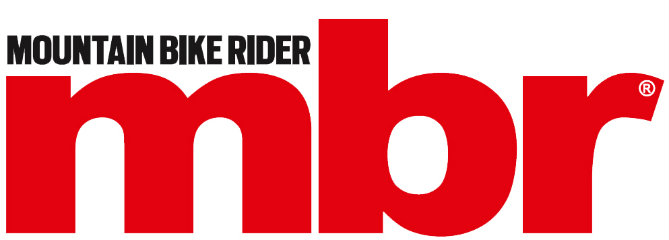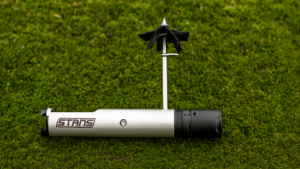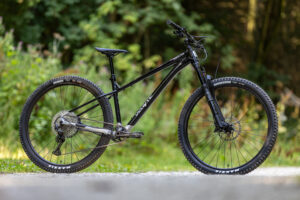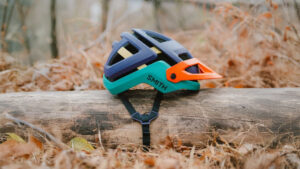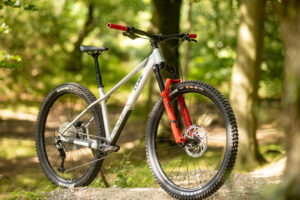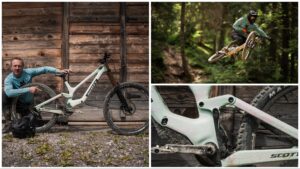We cut through they hype and recommend the very best enduro mountain bikes on the market; bikes that blend the downhill capability of a DH bike with the uphill prowess of a trail bike.
The best competitive enduro mountain bikes need to strike the perfect balance between speed and efficiency on flatter trails, yet still be able to blast descents that wouldn’t look out of place on the World Cup DH circuit.
Even if you’re not competing, because mechanical support at races is minimised, the best mountain bike rigs destined for enduro racing need to be ultra-reliable too. Look for travel between 160mm and 180mm combined with either 29in wheels front and rear, or mullet set-ups (29in front, 27.5in rear). Big rotors are a must (200mm) and reinforced tyres with a soft compound up front. Chain guides get fitted for extra security and you may even find a few coil shocks on some models.

YT Industries’ Capra Core 2 GX just had the edge on the Canyon Torque when we tested them back-to-back.
1. YT Capra
Best direct-sales enduro race bike
Wheel size: 29/27.5in | Frame sizes: S, M, L, XL, XXL | Weight: 16.6kg | Suspension travel: 170mm f/170mm r | Rating: 9/10
Reasons to buy:
- Calm and quiet
- Rocketship fast
- Five frame sizes
Reasons to avoid:
- Needs sturdier casing tyres
The Capra is the bike that really made YT a household name in mountain bike circles over a decade ago, and the latest bike just builds on that success. Given how inflation has eroded spending power, it’s remarkable how much you get for your money now compared to a decade ago. Travel has gone up, geometry has improved, suspension is better, the bikes are stronger and yet the value is still impressive. Particularly as you can choose from carbon or alloy frame options depending on your budget.
We reckon the Capra has a slight bias towards going fast. Yes, it still loves to show its wild side, but it’s happier getting down to business punching the clock with PBs and PRs down your favourite descents. As such, it’s a great privateer enduro race bike.
Read our full review of the YT Capra Core 2 GX

The Canyon Torque Mullet AL 6 loves to party.
2. Canyon Torque
So wild it needs an ASBO
Wheel size: 29/27.5in | Frame sizes: S, M, L, XL | Weight: 16.6kg | Suspension travel: 170mm f/175mm r | Rating: 9/10
Reasons to buy:
- Supportive
- Playful and bombproof ride
- Excellent tyre spec
Reasons to avoid:
- Fork needs more support or overinflating
- No proportional chainstay lengths
For anyone who lives within manualling distance of a bike park, the Canyon Torque comes highly recommended. The bike made famous by Fabio Wibmer just loves stunting, whether its motocross-size jump lines or surfing steep, loamy chutes. To take the hits, Canyon has built it solid, and then implanted the mind of a hooligan. Yes, it loves to get wild and out-of-shape in every turn, somehow remaining pliable on the edge of control.
At least that’s case with the mullet version – you can also get the Torque with 29in wheels, a carbon frame, and even a coil shock. The choices are endless. What ties all the options together is terrific value and generous sizing, where short seat tubes and low standover let you choose a longer bike without getting penalised by clearance.
Read our full review of the Canyon Torque Mullet AL 6

The Merida One-Sixty FR 600 offers plenty of bang for not too many bucks.
3. Merida One-Sixty FR 600
Best long-travel enduro bike
Wheel size: Mullet | Frame sizes: XShort, Short, Mid, Long, XLong | Weight: 17.2kg | Suspension travel: 180mm f/171mm r | Rating: N/A
Reasons to buy:
- Robust build kit
- Well matched DVO suspension
- Modern sizing system
- Keenly priced
- Bike park-ready straight from the box
Reasons to avoid:
- Internal headset cable routing
- Noisy in rough terrain
- Heavy
Merida might not be the first brand that comes to mind when considering a bike for shredding jump trails or tearing up enduro tracks, but the competitively-priced One-Sixty FR 600 deserves to be on your radar. With a 180mm fork, and 171mm of coil-sprung travel out back, the One-Sixty packs enough heat to take on pretty much anything, and the flex-stay rear suspension design is innovative while reducing complexity so you have fewer bearings to worry about in the long run.
Modern geometry ensures plenty of standover height on all frames, so you can choose your size according to length, and handling characteristics. Built to category 5 strength, and with a burly aluminium frame, it’s no lightweight, but it actually pedals and climbs surprisingly well. And on the descents, we found the Merida One-Sixty was easy to ride, confidence-inspiring, and impressively capable.
Read our first ride review of the Merida One-Sixty FR 600

The Scott Ransom 900 RC is one fast bike, both up and down
4. Scott Ransom
Fastest enduro race bike
Wheel size: 29in | Frame sizes: S, M, L, XL | Weight: 15.75kg | Suspension travel: 170mm f/170mm r | Rating: N/A
Reasons to buy:
- Accomplished enduro bike, both up and down
- TracLoc lets you optimise the suspension and geometry for ascents on-the-fly
- Adjustable geometry
- Remarkably clean frame
- Longer shock service intervals
Reasons to avoid:
- No proportional chainstays
- Headset-routed cables and one-piece bar and stem
Scott’s latest Ransom cuts quite a dash with its seamless frame design, where the shock is hidden inside the down tube. Aside from looking distinctive, tucking the shock out of sight keeps it protected from dirt and grit, so it should last longer between services. The shock is also hooked up to Scott’s clever on-the-fly travel and geometry adjust system. Called TracLoc, it lets you firm up the suspension for efficient, energy-saving climbing, then unleash the full 170mm of travel on the descents. And the less calories you burn on the climbs means the more you can push it on the downhills.
There’s also loads of geometry adjustment built-in to the frame, and a remarkably composed suspension that hoovers up the harshest of bumps, but provides loads of support to push against when hitting jumps. An awesome package then, even if the traditional bricks and mortar sales model means that you’ll pay a premium versus a direct-sales brand like YT or Canyon.
Read our full review of the Scott Ransom 900 RC
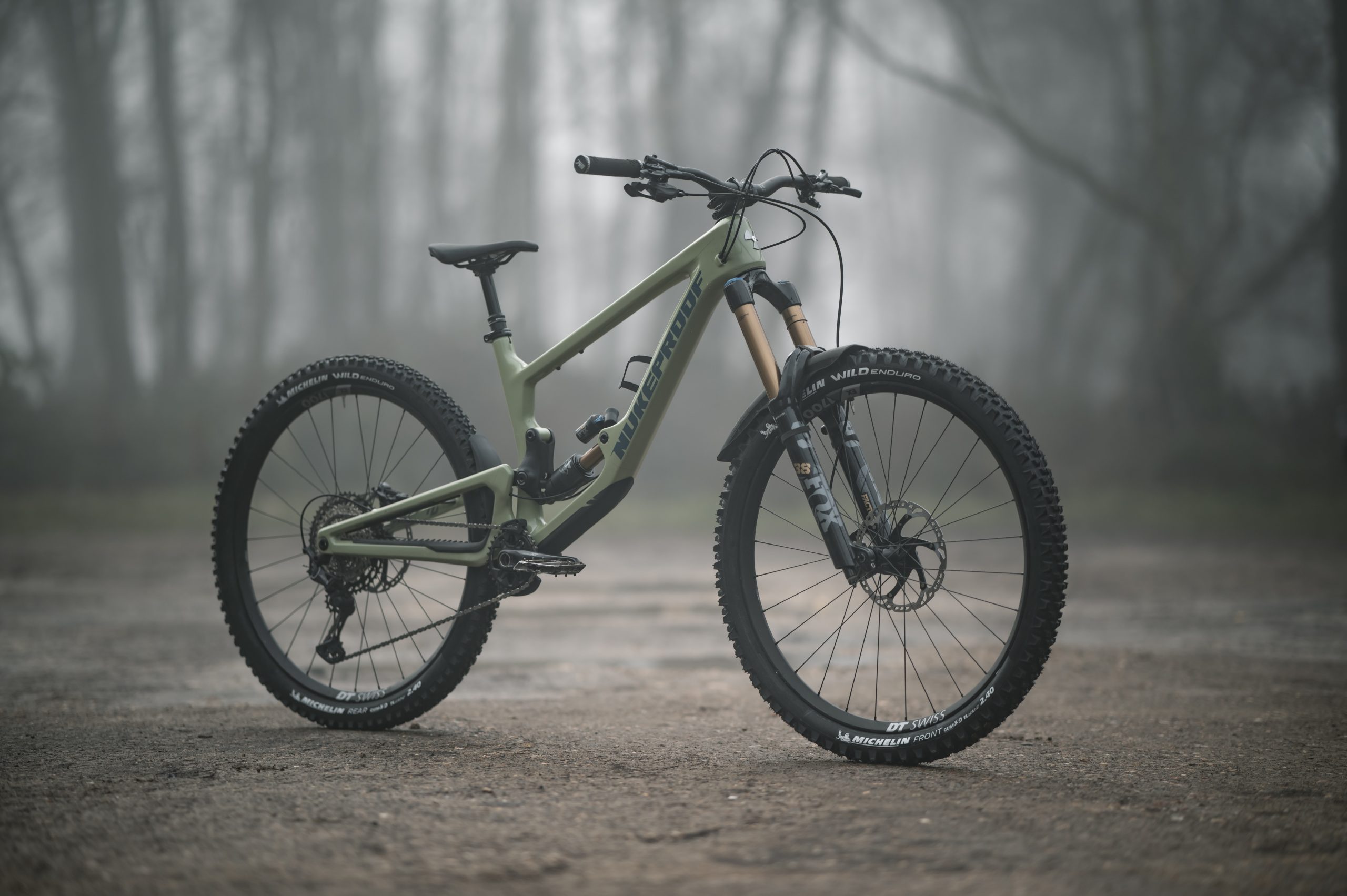
The Nukeproof Giga is a surprisingly versatile enduro bike that’s fun and engaging to ride
5. Nukeproof Giga
Best value shop-bought enduro/bike park stormer
Wheel size: 27.5, 29in or mullet | Frame sizes: S, M, L, XL, XXL | Weight: 15.4kg | Suspension travel: 180mm f/170mm r | Rating: 10/10
Reasons to buy:
- All of the travel, none of the drawbacks
- Adjustable suspension feel
- Low standover
- Remarkably agile considering the amount of travel
Reasons to avoid:
- Michelin tyres are temperature sensitive
- Cable guides pop out
The Giga is testament to the adage that you can have your pudding and eat it. You can enjoy all of the all-ness, all of the time. Loads of travel. Slack AF head angle. The biggest of wheel sizes. And the most remarkable thing? It rides just like a normal mountain bike when the gradient tips up. The Giga really is a race-worthy enduro bike that doesn’t feel like a chore to pedal around on your Sunday Social rides. Poppy and playful, the Giga is no passive plough.
Read our full review of the Nukeproof Giga 290 Carbon Factory

The Forbidden Dreadnought is a high-pivot idler bike with 170mm/154mm travel and 29in wheels.
6. Forbidden Dreadnought
Best high-pivot enduro bike
Wheel size: 29in | Frame sizes: S, M, L, XL | Weight: 15.99kg | Suspension travel: 170mm f/154mm r | Rating: 9/10
Reasons to buy:
- Unique ride quality
- Great sizing with balanced weight distribution across all sizes
- Buttery-smooth suspension
- Steep seat angle
Reasons to avoid:
- Needs a high-rise bar
- End-stroke progression makes it harder to get full travel
- Idler is noisy when it’s muddy
- Longer chainstay and rearward axle path means you have to put more effort into lifting the front end
With so many bikes using a similar cookie-cutter design, Forbidden’s trailblazing high-pivot design stands out. And the brand has plenty of pedigree, too, since founder and designer Owen Pemberton spent many years designing high-pivot bikes at Norco before going solo.
He also pioneered size-specific chainstays to maintain better weight distribution across sizes, a feature that also makes it onto the Dreadnought. 154mm might seem outgunned by today’s enduro bikes, but the Dreadnought rides bigger and more capable than the numbers suggest. As we concluded in our review, “if you like going fast in rough terrain, there’s probably no better 150mm travel bike”. Hey, if Connor Fearon can qualify at a World Cup DH on one, what’s stopping you?
Read our full review of the Forbidden Dreadnought

The Hope HB916 is thoroughly modern and brilliantly engineered
7. Hope HB916
British engineering brilliance
Wheel size: 29in or mullet | Frame sizes: H1, H2, H3, H4 | Weight: 15.28kg | Suspension travel: 170mm f/160mm r | Rating: 9/10
Reasons to buy:
- Fast, smooth ride
- Made in the UK
- Beautiful detailing
- Playful for a high-pivot bike
Reasons to avoid:
- Limited seat stay clearance at bottom out
Hope started building its own bikes back in 2017 with the HB160. Billed as an enduro bike, it looked stunning, but felt more like a long-legged trail bike than an alpine hauler. With the latest HB916 Hope has kept the artisan carbon aesthetics but refined the geometry and moved to a high-pivot idler suspension design. The result is an enduro bike that now rides as good as it looks.
For an idler design it’s quiet and smooth, with less drag nibbling away at your pedalling efforts. And that rearward axle path gives a silky smooth ride, that lets you go faster with less energy than its rivals. With the HB916 you get beauty and the beast.
Read our full review of the Hope HB916

The Atherton AM. 170 is a truly unique enduro bike using a left-field construction method.
8. Atherton AM. 170
Best for custom sizing and unique frame construction
Wheel size: 29/27.5in | Frame sizes: 22 options! | Weight: 16.4kg | Suspension travel: F 180mm/R 170mm | Rating: N/A
Reasons to buy:
- Extensive sizing options
- High-end build with unique ride quality
- Competitively priced given what’s involved in the manufacturing process
Reasons to avoid:
- The rubberized protection started to peel away under the down tube
We rode several different iterations of Atherton prototype before slinging a leg over this latest AM. 170, and while the early predecessors showed glimmers of promise, we weren’t expecting to be so completely smitten by the ride of the production model. It’s fair to say Atherton Bikes has learned a lot and evolved considerably since its inception, and the new bikes are as stunning to ride as they are unique in the market.
With 22 frame size options to choose from, and a sorted size calculator, anyone can get the perfect fit. While the frame construction gives a totally distinct aesthetic that is about as far from mainstream rivals as you can get. But it’s the ride that really shines – when we rode it at Dyfi Bike Park we said it ‘seemed to glide almost effortlessly across rough ground’, and that it ‘never bites back, does anything weird or unsettling and holds its shape so well you can hammer without feeling like you’re the one getting hammered’.
Read our full test review of the Atherton AM. 170

The Santa Cruz Nomad is an obvious choice, but it hits all the right notes.
9. Santa Cruz Nomad
Best enduro bike for mixing business and pleasure
Wheel size: 29/27.5in | Frame sizes: S, M, L, XL, XXL | Weight: 16.01kg | Suspension travel: F 170mm/R 170mm | Rating: N/A
Reasons to buy:
- Supple, poppy suspension and playful handling
- Wide size range
- Well balanced
- Useful frame storage
Reasons to avoid:
- No surprise – it’s expensive
- Shock tunnel makes setting sag difficult
- On the heavy side
- Needs bigger rotors for sustained steeps
No list of the best enduro bikes would be complete without the classic Santa Cruz Nomad. Now on version 6, the latest Nomad is a significant improvement on the disappointing V5, thanks to a move to MX wheels (29in front/27.5in rear), improved geometry, and better suspension.
There are loads of frame sizes to choose from, internal frame storage adds a practical note, and the ride quality is all-out gravity focussed, with every run turning into the rowdiest party of our lives thanks to the supple, poppy suspension and agile rear wheel. It’s a bit of a fish out of water on the climbs, but we prefer the fact that the new Nomad isn’t trying to be something it’s not. An expensive option, and not the most imaginary choice, but there’s a reason why the Nomad is so popular.
Read our full test review of the Santa Cruz Nomad

The Commencal Meta V5 Race ploughs its own furrow.
10. Commencal Meta V5
Unique frame feel makes for a comfortable but fast ride
Wheel size: 29/29in or MX (Meta SX) | Frame sizes: S, M, L, XL | Weight: 16.25kg | Suspension travel: F 160mm/R 150mm | Rating: 8/10
Reasons to buy:
- Suspension has excellent grip and support
- No frame harshness
- Agile and playful
- Character all of its own
- Good climbing performance
Reasons to avoid:
- Heavy
- Can be a handful on really long, rough tracks
- Some riders might find it too flexy
- Lack of suspension set-up advice
- Imbalance of tyre grip
- Standard bottle and cage doesn’t fit
Commencal’s Meta stands out from the enduro crowd by having less travel and an alloy frame, but not following the herd has created a bike that also stands out for its ride qualities. Allied to a RockShox Lyrik fork, with smaller diameter upper tubes, the alloy frame has a soft, compliant ride that never spikes or deflects when hitting jumbled rock gardens at Mach 2. So while it doesn’t have the depths of travel that some enduro bikes boast, it can still keep pace against the clock.
If you do want more travel, Commencal also offers the Meta SX, which has a mullet wheel configuration and adds 10mm travel front and rear. Whichever you choose, the Meta has a unique ride that is as refreshing as an alpine spring.
Read our full test review of the Commencal Meta V5

Sam Hill turned his hand to enduro, and his immense skill brought him numerous victories
What should I look for in the best enduro mountain bikes?
An enduro bike is basically a mountain bike with at least 150mm of suspension travel, but more commonly 160-180mm. They’re built for the rigours of racing full-bore downhill whilst being sufficiently efficient on climbs and contouring trails too. As racing is hard, days are long, trails are punishing and outside mechanical assistance is minimal, the bikes must be extremely durable and reliable too. First an enduro bike needs to be lightning fast downhill. That’s because downhill sections make up the bulk of the timed runs in an enduro race. With some stages lasting upwards of ten minutes, and with limited practice time to learn the courses, the bike needs to be easy to ride and forgiving of bad line choices and cock-ups that are inevitable in the heat of the moment when fatigue sets in.
Is 150mm enough travel for enduro?
Yes, absolutely. However, don’t expect to be able to carry as much speed, in as much comfort or control, as you would on a bike with longer travel. For a long while, 150mm was standard travel for a downhill bike, but now it’s more common on a trail bike. But with the right build and geometry, you can absolutely smash an enduro trail with only 150mm of travel. So if you’re wondering whether you can race an enduro on your trail bike, the answer is absolutely yes.

The Bold Unplugged Pro has a remote switch that reduces the travel and increases the compression damping to improve climbing performance
How important is climbing performance on an enduro bike?
Enduro isn’t simply about high-alpine marathon DH runs. The bikes also need to climb and pedal efficiently. With long liaison stages linking up the timed sections, the weight of the bike is also a factor as you don’t want to be carrying excess baggage on the climbs. Lighter bikes also needs less manhandling to guide them when you get tired, which becomes a massive bonus for those long days in the saddle. In a nutshell, a good enduro bike needs to be every bit as capable as a downhill bike, but as agile and efficient as a typical trail bike. That’s a pretty tall order, but the best modern enduro bikes fulfil that brief.

Canyon’s latest Strive enduro bike has multiple geometry adjustments
What sort of geometry does an enduro bike have?
The bottom bracket heights of a lot of our bikes hover at around the 350mm mark. But this measurement can’t be taken at full value, as all of the bikes have different amounts of suspension travel. If the bikes are all set with the same amount of suspension sag, then the bike with the shorter travel will have a higher bottom bracket. Another point to note about the BB height is that the axles of the 29 in wheels are higher than for the 27.5in wheels, so there is a greater BB drop, giving added stability. Head angles can be as slack as 62º, but most are in the 63-64º range. Manufacturers often add some kind of geometry adjustment, too, so riders can choose to prioritise certain handling characteristics. For more on this topic, read our deep dive into mountain bike geometry.

Bikes like the Santa Cruz Megatower are as fun to ride as they are fast to race
Does an enduro race bike make a good enduro bike for non-racers?
It’s amazing how enduro bikes have evolved in such a short space of time; the best new designs are now essentially lightweight mini-downhill bikes and, it seems, every man and his dog is now an enduro racer (mbr staff included). Cut through the marketing spiel, however, and one thing is crystal clear: longer-travel bikes are better than ever before, and we have enduro to thank for it.
The reason is simple; racing breeds development. The latest enduro bike may not look dissimilar to the all-mountain bikes of yesteryear, but in fact they are very different animals. Due to the nature of the racing, this new breed is more DH-focused, with slacker angles and better high-speed handling. In fact, the geometry isn’t too far off what you’d see if you strolled the pits at a World Cup DH race. But improvements to climbing performance and adjustable geometry means they make great bikes for riders who are not interested in racing – just hitting their local descents or riding a bike park. These are versatile rigs, begged to be ridden hard.

